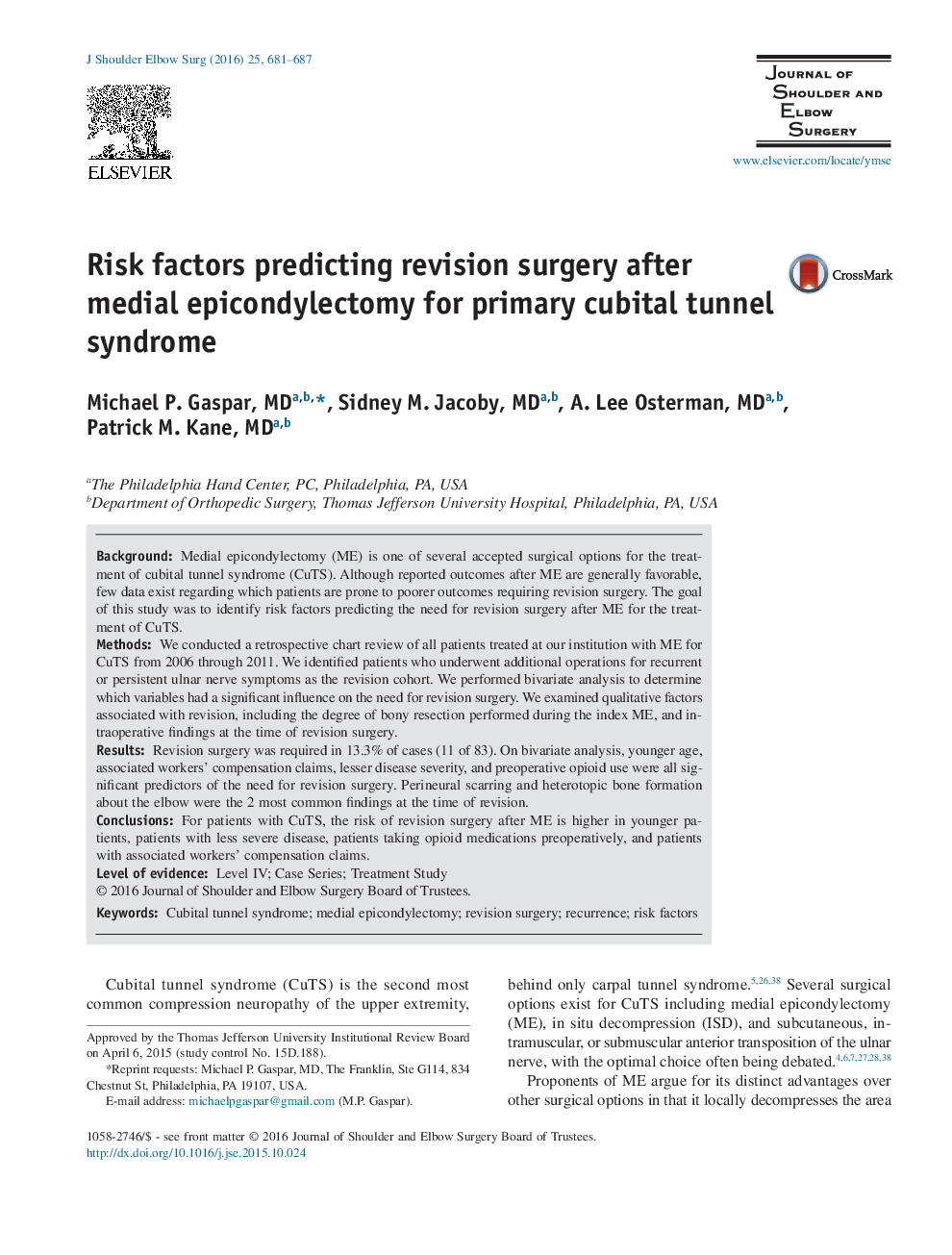| Article ID | Journal | Published Year | Pages | File Type |
|---|---|---|---|---|
| 4073140 | Journal of Shoulder and Elbow Surgery | 2016 | 7 Pages |
BackgroundMedial epicondylectomy (ME) is one of several accepted surgical options for the treatment of cubital tunnel syndrome (CuTS). Although reported outcomes after ME are generally favorable, few data exist regarding which patients are prone to poorer outcomes requiring revision surgery. The goal of this study was to identify risk factors predicting the need for revision surgery after ME for the treatment of CuTS.MethodsWe conducted a retrospective chart review of all patients treated at our institution with ME for CuTS from 2006 through 2011. We identified patients who underwent additional operations for recurrent or persistent ulnar nerve symptoms as the revision cohort. We performed bivariate analysis to determine which variables had a significant influence on the need for revision surgery. We examined qualitative factors associated with revision, including the degree of bony resection performed during the index ME, and intraoperative findings at the time of revision surgery.ResultsRevision surgery was required in 13.3% of cases (11 of 83). On bivariate analysis, younger age, associated workers' compensation claims, lesser disease severity, and preoperative opioid use were all significant predictors of the need for revision surgery. Perineural scarring and heterotopic bone formation about the elbow were the 2 most common findings at the time of revision.ConclusionsFor patients with CuTS, the risk of revision surgery after ME is higher in younger patients, patients with less severe disease, patients taking opioid medications preoperatively, and patients with associated workers' compensation claims.Level of evidenceLevel IV; Case Series; Treatment Study
